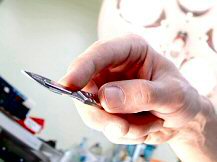 Two new studies presented at the Annual Scientific Meeting of the American Urological Association (AUA) claim to show that adult circumcision reduces the risk of contracting HIV without reducing pleasure or causing sexual dysfunction.
Two new studies presented at the Annual Scientific Meeting of the American Urological Association (AUA) claim to show that adult circumcision reduces the risk of contracting HIV without reducing pleasure or causing sexual dysfunction. The first study, by Australian researchers, shows that the inner foreskin has the largest concentration of Langerhans' cells, which are the initial cellular targets for HIV. After analyzing biopsy samples from 10 uncircumcised and 10 circumcised men, researchers found that the inner foreskin has a significantly higher density of Langerhans' cells than other areas of the foreskin. By removing the inner foreskin, circumcision removes the skin surface which is most susceptible to HIV infection, reducing the risk of contracting HIV.
The second study, by North American and African researchers, shows that circumcised men had a significantly lower risk for coital injuries (bleeding, scratches, cuts, abrasions or "getting sore") compared to uncircumcised men and that there was no difference in sexual function between circumcised and uncircumcised men.
To complete the study, the researchers divided nearly 3,000 patients from Kenya into two groups: a control group and a group to be circumcised. Detailed evaluations were done at one, three, six, 12, 18 and 24 months after circumcision. The results showed that there was no difference in sexual function between the two groups and that the circumcised group reported fewer coital injuries.
"These are important reports which support the concepts that circumcision does not interfere with sexual function and that circumcision is an important element of HIV prevention in sub-Saharan Africa," said AUA spokesman Ira D. Sharlip.
Related:
Circumcision found to help prevent HPV infection
New doubts about circumcision's HIV preventative effect
The Case For Penis Pruning
HIV And Circumcision
Source: American Urological Association

